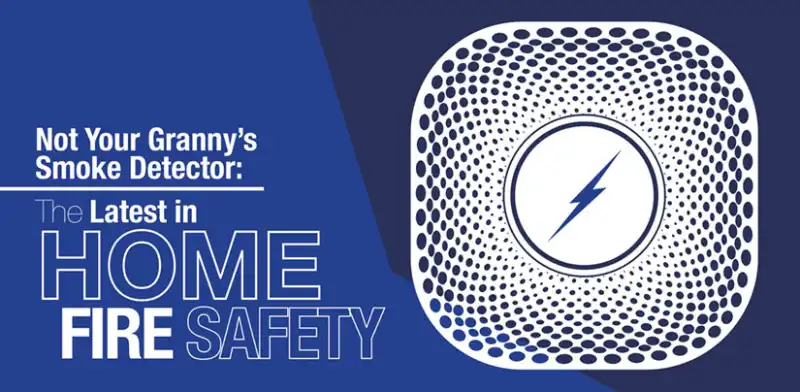
Mr. Electric highlights advancements in home fire safety with modern smoke detectors. Key steps include.
|
Round. UFO-like. Able to eat through a 9-volt battery in a single month. Annoyingly difficult to disengage when you burn the bacon. A smoke detector is still a smoke detector, right? Not so much. Smoke alarms have come a long way in recent years, so if you’re still using the same kind of smoke detector your Granny had in her house when you were growing up, you’re missing out on a lot — both in safety and technology.
First of all, smoke detectors can expire
Check for a date on the inside of the alarm, next to the battery, or stamped on the back. Expired smoke detectors aren’t reliable. If your smoke detector doesn’t have a date on it, it’s a dinosaur — likely well over 10 years old — and screaming for retirement, just like Granny.
Second of all, there are different types
Yes, we said types — and we don’t mean battery-powered or hardwired. To make matters even more interesting, one type won’t get the job done. You need both, or you and your family could be at risk:
- Flaming: Ionization alarms: The majority of smoke alarms are ionization alarms. Ionization alarms specialize at detecting fires with flames. Unfortunately they have a tendency to give off false readings — when your cooking errs on the side of Cajun-style and strangely when you’re in the shower — leading many owners to get irritated and yank the battery. Ionization alarms are tens of minutes slower at detecting smoldering fires, but do work quite well responding to quickly spreading fires, such as those involving flammable liquids and paper.
- Smokin’ Hot: Photoelectric detectors: Photoelectric smoke detectors identify smoldering flames, such as those that would occur when your couch, bed, or kitchen cabinets get torched. Because it takes a greater amount of smoke to set them off, there are fewer false alarms, but this makes them too slow at detecting rapidly developing fires with flames.
- Must-Have: Combination alarms: Both photoelectric and ionization alarms, jam-packed into a single detector, just in case you don’t think smoke alarms make a major decorative statement. You need more than the single unit your Granny had too, including one on every floor of your home, and one outside all sleeping areas. Sleep with the door closed? Another one in your bedroom would also be wise.
Are you up on the latest in smoke detector technology?
- Wireless smoke detectors: Wireless smoke detectors communicate with each other — you guessed it — wire-free, using radio frequency waves. When one goes off, they all do, giving you precious additional time to get out of your home safely. Many municipalities now require these interconnected smoke alarms by law. With or without the law, they’re still a great idea, and with their low cost, a fire safety no-brainer.
- Wi-Fi smoke detectors: Smart, like your phone, these app-enabled detectors connect to your Internet — and you — via Wi-Fi. In the event of a trigger, they offer a multitude of functions, sending an alert to your mobile device if you are away, and verbally informing you of the origination of the alert, allowing for more informed escape decisions. They offer ease of interconnectivity, and often are packaged in combination smoke/carbon monoxide (CO) alarms.
- Smoke detector/CO detector combos: These little beauties combine two essential safety features in one — detecting both smoke and deadly (but odorless) carbon monoxide. They come in many varieties, including traditional, wireless, and Wi-Fi models. Buyers beware, however: Some combo alarms contain only one type of smoke detection. Be certain to verify both ionization and photoelectric detection, otherwise you may end up needing additional units.
- Fun and interesting smoke detectors: Want to make a statement or have a little fun with your smoke detector choice? Check out these off-the-wall options:
- For the birds: Chic-a-Dee smoke detector
- Drive you buggy: Lento smoke alarm
- Beam-me-up: Jacob Jensen smoke detector
- Simple as screwing in a light bulb: Lum smoke detector
Don’t wait for your old smoke detector to go up in smoke. Get with the times with the help of Mr. Electric® today.
